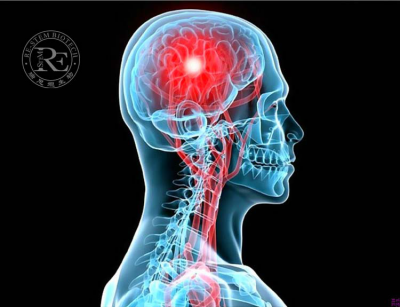 细胞培养进口血清进口胎牛血清进口新生牛血清进口猪血清马血清
细胞培养进口血清进口胎牛血清进口新生牛血清进口猪血清马血清 支原体检测盒及标准品常规PCR检测试剂盒荧光定量PCR检测(qPCR法)支原体DNA提取灵敏度标准品(方法验证用)特异性标准品(方法验证用)PCR定量标准品(可用于方法验证)
支原体检测盒及标准品常规PCR检测试剂盒荧光定量PCR检测(qPCR法)支原体DNA提取灵敏度标准品(方法验证用)特异性标准品(方法验证用)PCR定量标准品(可用于方法验证) 支原体祛除试剂细胞中支原体祛除环境支原体祛除水槽支原体祛除
支原体祛除试剂细胞中支原体祛除环境支原体祛除水槽支原体祛除 干细胞培养基
干细胞培养基 DNA/RNA污染祛除DNA/RNA污染祛除试剂DNA污染监测
DNA/RNA污染祛除DNA/RNA污染祛除试剂DNA污染监测 RNA病毒研究试剂RNA病毒检测试剂盒病毒RNA提取
RNA病毒研究试剂RNA病毒检测试剂盒病毒RNA提取 PCR仪器及配套产品DNA污染监测祛除PCR/qPCR仪性能检查PCR试剂PCR试剂盒PCR预混液(冻干粉)热启动聚合酶MB Taq DNA
PCR仪器及配套产品DNA污染监测祛除PCR/qPCR仪性能检查PCR试剂PCR试剂盒PCR预混液(冻干粉)热启动聚合酶MB Taq DNA 微生物PCR检测食品检测类产品食品微生物检测细菌PCR检测
微生物PCR检测食品检测类产品食品微生物检测细菌PCR检测
- 细胞培养进口血清进口胎牛血清进口新生牛血清进口猪血清马血清
- 支原体检测盒及标准品常规PCR检测试剂盒荧光定量PCR检测(qPCR法)支原体DNA提取灵敏度标准品(方法验证用)特异性标准品(方法验证用)PCR定量标准品(可用于方法验证)
- 支原体祛除试剂细胞中支原体祛除环境支原体祛除水槽支原体祛除
- 干细胞培养基
- DNA/RNA污染祛除DNA/RNA污染祛除试剂DNA污染监测
- RNA病毒研究试剂RNA病毒检测试剂盒病毒RNA提取
- PCR仪器及配套产品DNA污染监测祛除PCR/qPCR仪性能检查PCR试剂PCR试剂盒PCR预混液(冻干粉)热启动聚合酶MB Taq DNA
- 微生物PCR检测食品检测类产品食品微生物检测细菌PCR检测
|
|
干细胞治疗在中风领域获得重要进展2017-05-05 12:45
【威正翔禹生物为您导读】中风是由于各种脑部血管病变所引起的脑功能缺损的一组疾病的总称,发病率高达120-180人/10万,且有75%以上患者可因此致残,乃至死亡。最近,瑞典隆德大学科学家在采用干细胞治疗中风领域取得重要进展,获得全球的瞩目。
脑中风是由于血管产生淤积,阻塞了血流通过,使得大脑缺氧而产生的疾病。最近瑞典隆德大学研究人员在采用干细胞治疗中风领域中取得了重要进展。相关报道发表在近期的《Brain 大脑》杂志上。研究人员将诱导多能干细胞在体外发育成成熟神经元,并移植到大鼠因中风而损伤的大脑皮层内。该移植的神经元能够和脑内其他重要结构都产生联系。并且移植手术显着提高大鼠的运动能力。虽然该研究还处在动物实验阶段,但是科学家对该疗法的信心很强。 该文章的通讯作者OlleLindvall博士称,该研究在基于干细胞治疗中风方面取得了重要成果,但是还需要更多的研究才能确定该研究的临床意义。大脑皮层通常因中风而遭到损伤,引起很多后遗症如轻度瘫痪,语言障碍等。研究人员希望能够采用病人自身的皮肤细胞产生神经元,来治疗中风。研究人员首先从成人中获得皮肤细胞并将其诱导为多能干细胞,接着诱导多能干细胞产生成熟的神经元。 ZaalKokaia博士称,采用该方法我们已经能够产生和大脑皮层中性质一致的神经元,而且我们也显示了这些神经元也是有功能的。不过需要解决的问题是要找到一种能够大量产生神经元的方法,这对移植手术很必要。ZaalKokaia博士补充道,我们必须要研究移植的神经元对大脑其他功能的影响,以及新神经元与其他神经元的整合程度等诸多问题。 推荐阅读原文: Human induced pluripotent stem cell-derived cortical neuronsintegrate in stroke-injured cortex and improve functional recovery.Abstract Stemcell-based approaches to restore function after stroke through replacement ofdead neurons require the generation of specificneuronal subtypes. Loss of neurons in thecerebral cortex is a major cause of stroke-induced neurological deficits in adult humans.Reprogramming of adult human somatic cells to induced pluripotent stem cells is a novel approach to producepatient-specific cells for autologous transplantation. Whether such cells canbe converted to functional cortical neurons thatsurvive and give rise to behavioural recoveryafter transplantation in the stroke-injuredcerebral cortex is not known. We have generatedprogenitors in vitro, expressing specific corticalmarkers and giving rise to functional neurons, from long-term self renewingneuroepithelial-like stem cells, produced fromadult human fibroblast-derived induced pluripotent stem cells. At 2 months after transplantation into thestroke-damaged rat cortex, the cortically fatedcells showed less proliferation and more efficient conversion to mature neurons with morphological and immunohistochemicalcharacteristics of a cortical phenotype andhigher axonal projection density as compared with non-fated cells. Pyramidalmorphology and localization of the cells expressing the cortex-specificmarker TBR1 in a certain layered pattern provided further evidence supportingthe cortical phenotype of the fated, graftedcells, and electrophysiological recordings demonstrated their functionality.Both fated and non-fated cell-transplanted groups showed bilateral recovery of the impaired function in the stepping testcompared with vehicle-injected animals. The behavioural improvement at thisearly time point was most likely not due to neuronal replacement andreconstruction of circuitry. At 5 months after stroke in immunocompromisedrats, there was no tumour formation and the grafted cells exhibitedelectrophysiological properties of mature neuronswith evidence of integration in host circuitry. Our findings show, for thefirst time, that human skin-derived induced pluripotent stem cells can be differentiated to cortical neuronal progenitors, which survive,differentiate to functionalneurons and improveneurological outcome after intracortical implantation in a rat stroke model. 上一篇: 血糖难控制?干细胞治疗带来新希望
下一篇: 美开发单细胞算法,揭示细胞发育路径
|
 细胞培养进口血清
细胞培养进口血清 支原体祛除试剂
支原体祛除试剂 干细胞培养基
干细胞培养基



